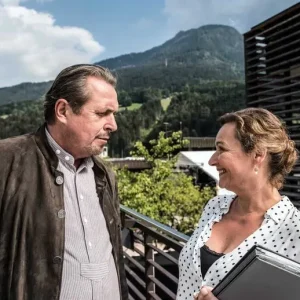**Spoiler Alert! Major plot points for *Die Rosenheim-Cops* revealed below.**
The iconic phrase, “Es gabat a Leich!” (“There’s been a corpse!”) rings out once again, signaling the start of another thrilling investigation for the Rosenheim police team. This time, the seemingly idyllic Bavarian town of Rosenheim is rocked by a murder, plunging the usually peaceful community into a maelstrom of suspicion and intrigue.
The victim, [**Insert Victim’s Name and Brief Description Here, e.g., a renowned local baker with a string of secret enemies**], is discovered [**Location of Body, e.g., in their own bakery, amidst a pile of flour, suggesting a struggle**]. The initial investigation uncovers a complex web of relationships, each suspect possessing a compelling motive. [**Mention 2-3 Key Suspects and their potential connection to the victim. E.g., a disgruntled business partner, a jealous ex-lover, a disgruntled employee all harbour secrets**. For example: “The victim’s business partner, a ruthless businessman named Herr Gruber, stood to gain significantly from the victim’s demise. Then there’s Frau Schmidt, a scorned ex-lover with a history of volatile outbursts. And let’s not forget the perpetually disgruntled bakery apprentice, young Herr Miller, who constantly complained about his working conditions.”].
Inspector [**Lead Investigator’s Name**] and his team face numerous obstacles as they delve deeper into the case. [**Describe a significant challenge or obstacle for the investigation. For example, a lack of clear evidence, conflicting witness testimonies, or the emergence of a red herring that throws the team off track.** E.g., “A series of seemingly unconnected burglaries across town initially divert the police’s attention, while a mysterious anonymous tip leads them down a blind alley.”]. The investigation will involve [**Mention specific investigative techniques used, e.g., forensic analysis, interrogation of suspects, examination of financial records**]. Unexpected twists and turns unfold as hidden alliances and long-buried secrets come to light.
The team must navigate [**mention a social or cultural element of Rosenheim that adds to the complexity of the case. E.g., local customs, traditional events, or closely-knit community dynamics**. E.g., “The deeply ingrained traditions of the local community make it difficult to uncover the truth, as many witnesses are reluctant to cooperate, clinging to a code of silence.”].
As the investigation progresses, the team uncovers a shocking revelation: [**Insert a significant plot twist that changes the trajectory of the investigation. E.g., a secret affair, a hidden inheritance, a past crime resurfaces**. E.g., “The victim’s seemingly flawless reputation crumbles as evidence emerges of a secret double life, involving illicit activities and powerful enemies.”].
Ultimately, the seemingly straightforward murder case becomes a complex puzzle with multiple layers of deception. After a thrilling chase and a series of dramatic confrontations, [**mention the resolution – without revealing the identity of the killer – that showcases the investigators’ skill and resourcefulness**. E.g., “A clever deduction, based on a seemingly insignificant detail, allows the Rosenheim Cops to corner the killer in a dramatic showdown at [Location of Confrontation].”]. The killer’s true motive is [**Hint at the killer’s motive without explicitly revealing their identity. E.g., revenge, greed, or passion**], adding another layer of complexity to the already intricate case. In the end, justice is served, but not without leaving the audience pondering the darker side of the seemingly idyllic town of Rosenheim. The episode concludes with the familiar satisfaction of a case closed, but also leaves a lingering sense of unease, highlighting the unpredictable nature of human behavior even in the most picturesque settings.





